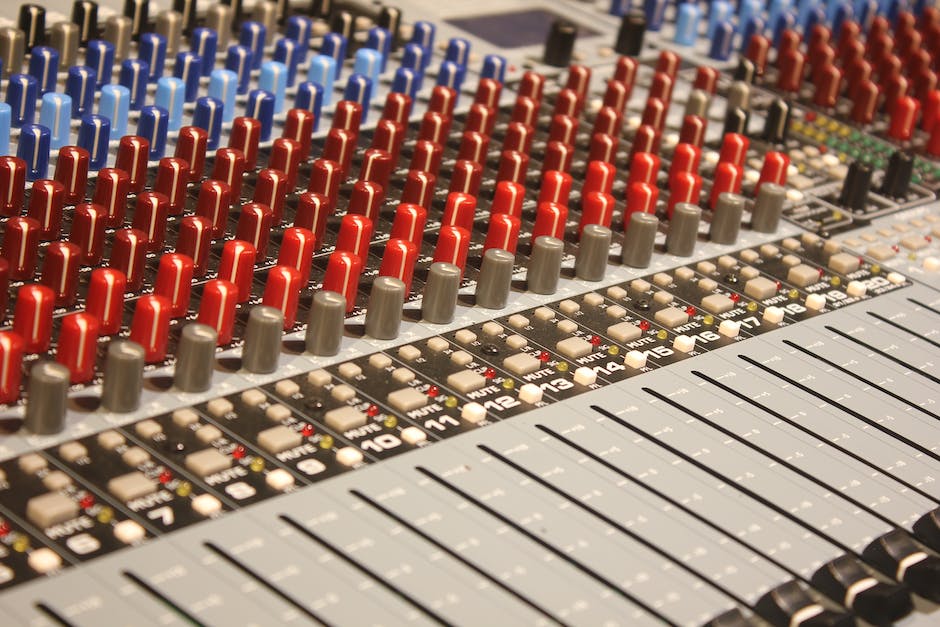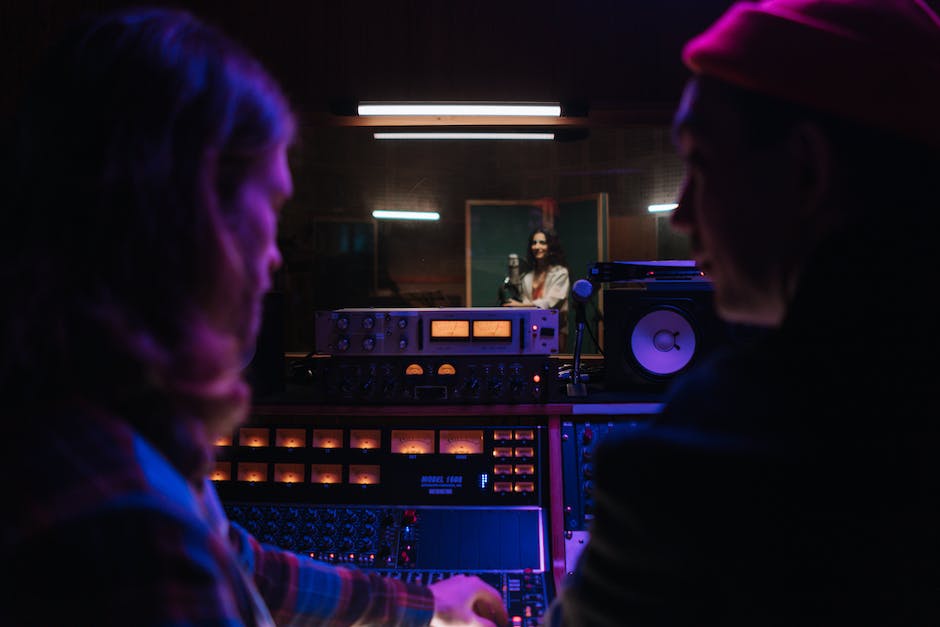The artistry of music extends far beyond the moment a note is struck or a melody is sung. From the ambience of a recorded song to the thumping sound of a club track, much of what we hear is the result of arduous post-production. Often overlooked, post-production is the process that occurs after the initial music recording, effectively the nexus where creativity meets technology. This intricate journey, beginning with raw audio elements and culminating in a polished final product, encompasses two crucial elements: mixing and mastering.
Understanding the Post-production Process
Music, the sweet intoxicant of the soul, has long been the refuge of dreamers, the sanctuary of the lost, and the dance floor of the ecstatic. It is a universe encapsulated within the brief silences between notes. And like a universe, the creation of a musical piece requires planets to align, stardust to collect and galaxies to collide. What’s often overlooked, however, is the unsung hero known as post-production that transforms these raw elements into a celestial symphony.
The post-production process in music is the final phase in the recording process where the initial blueprint of the song is sculpted into the final masterpiece on your turntable or streaming platform. It is where the raw, sometimes cacophonous, collection of sounds are harmoniously woven into one cohesive melody-deserving of our attention, our tears, our laughter, and our utmost admiration.
This intricate process typically begins with editing, which includes the transcription of different tracks, refining rhythm and pitch, and eliminating any unwanted noise. It’s here that the incessant banging of surrender against an analog drum gives way to the rhythmic pulsation of an awe-inspiring beat. A flat note no longer languishes in its mediocrity but becomes an integral part of a magnificent chorus.
This then seamlessly transgresses into the domain of mixing. The mixing engineer, the unseen Maestro, begins the task of playing with each sound’s dynamics. Every sigh, every pluck, every strum, and keystroke is meticulously scrutinized for volume, balance, and pan position, ensuring an equilibrium of sound harmony. Like a master painter mixing their palette, the mixing engineer fuses together disparate sounds to create a sonic landscape that caresses the very contours of our souls.
And then, finally, there is the mastering. Often mystified as an arcane art within the industry, it is, in its core essence, the final romantic refinement of the record before it takes its first leap into the world. Utilizing equalization and compression, the mastering engineer carefully wraps the audience in a blanket of sound where no instrument fights for attention and every nuance is coddled into a universally consumable package.
Music post-production is the uncredited catalyst taking a listener from the realms of mundane reality, lifting them gently into the cosmic weave of the artist’s soundscape. It’s an intricate ballet conducted within the shadows, demanding both technical prowess and artful intuition.
Infusing magic into every note, the post-production process in music simultaneously serves as a translator, a custodian, and an artist. It ensures the raw emotion, the subtle details, and the grand crescendo intended by the creator reaches the listener in a form as beautiful, complex, and diverse as the multifaceted orb of human experience itself, unblemished, cherished and revered – a testament to the enduring power of music. Celebrate it, for without it, the world would be left listening to an orchestra of unfinished symphonies.

The Art and Science of Mixing
Once the recording buttons dim and flicker off, the stage is set for the unsung heroes of music – mix engineers. Threaded deeply within the tapestry of music creation, the wheels of mixing start to spin in motion, unsheathing the essence of the song, and shaping it into a magnum opus.
The melody that clasps our ears, the rhythm that makes our hearts sway, the timbre summoning our emotions – all are weaved into a harmonious ensemble during a process known as ‘Mixing’. Embarking on a journey to understand the phenomenon of mixing, it’s necessary to first grasp its undiluted definition: essentially, it is the culmination of various sounds, elements, and layers, melded into a single track, balances in texture and intricacies upheld. Each chime and rhythm, every harmony and dissonance, is collectively kneaded into a sonic narrative.
Step within the realm of a mix engineer and one would discover the elaborate canvas of instruments, elements, frequencies, and levels, awaiting intricate brush strokes. Here, contrasts are embraced – the whispers are enfolded within roars and the shadows are pressed against the light. This intricate science of sound manipulation fashions an auditory paradise where the subliminal conversations between instruments are fine-tuned, vocal melodies are piqued, and the unique nuances, sometimes even the ‘flaws’, are laid bare and embraced.
Each element in a track holds its own charm, yet also forms part of a grand symphony. This dynamic dance between each strum, beat, and note battles for space within the finite frequency spectrum. The art of mixing forges a harmonious equilibrium, preventing any drowning out of other elements or overpowering the collective sonic energy. From the subtle bass notes nudging gently in the background to the crisp chorus perched atop the musical structure, each element is granted its rightful place.
So what does this equilibrium translate into for the listener? The answer is all-around – sheer bliss, rich in depth and intensity. The listeners are suddenly transported onto a multidimensional excursion overflowing with fleeting notes, cascading melodies, and rich textural intricacies. Listening to a finely mixed track is akin to draping the ears with an auditory velvet, coursing with rhythmic undulations and pulsating sensations.
Yet mixing does not merely act as the midwife of music; it transcends – becoming a language that communicates the raw emotions smeared within a song to a listener. Every knob-twist, every pan or fade, relays the artist’s delicate whispers of love, the rallied cries of revolt, or the heartfelt laments of despair. A muffled note, the echo of a drumbeat, or even the silence between notes, all thanks to the intricate art of mixing, contain within them the power to evoke memories, trigger a sea of emotions, and create an intimate bond between the artist and the listener.
In the end, it would be an egregious mistake to underestimate the role of mixing in the realms of music. It is not just a cogwheel in the machinery, but the lifeblood that marries the theory and practice of music into a divine syncopation. Bridging the gap between the first recorded note and the final mastered track, mixing is the golden thread that binds the musical mosaic together, enhancing and emboldening every color, every vibration. So when the needle drops, listen closer, and appreciate the age-old craft of mixing, a truly underappreciated cornerstone of music’s enchanting allure.

Mastering Demystified
Drilling down deeper into the world of post-production, let’s journey into the realm of mastering, an indispensable procedure that adds the final polish to a mixed track and prepares it for ultimate distribution. Often referred to as the “final checkpoint” in music production, mastering serves as the bridge that enhances the listener’s experience and aligns it with the artist’s original vision.
Mastering encompasses two core functions – to engineer uniformity and to optimize playability across all systems and formats. Perhaps one could liken mastering to the nuancing brushstrokes of an artist completing a masterpiece: the vision is already crafted through mixing, but the strokes unify the concept, refining each and every intricate detail to saturation. Taking a mixed track through the mastering process ensures it has a balanced frequency response, mitigating any extreme spikes or troughs that could compromise the intended auditory experience.
In the hands of a mastering engineer who listens with an astute and experienced ear, an equalizer, a compressor, a limiter and other specialized tools are wielded like finely honed instruments, perfecting loudness and dynamics, fine-tuning details, reducing any existing noise and distortion, and ensuring seamless track transitions. Mastering can breathe life into a relatively flat mix, creating depth, vibrancy, and resonance that wasn’t present before.
In addition, this intricate process extends to formatting, preparing audio tracks for various playback formats, from streaming platforms to vinyl pressings, ensuring every note resonates correctly regardless of playback source. In this digital age, with listeners consuming music on a plethora of platforms, the mastering process becomes even more crucial to convey the music’s essence across all listening experiences.
Furthermore, mastering engineers have profound understanding and knowledge of specific sonic footprints and nuances of different music genres, allowing them to make calculated decisions that cater to the genre’s specific demands. A jazz track may need a different mastering touch from a hip-hop beat. This genre-specified mastering approach results in a sound that feels at home with other tracks within the same genre.
Mastering, therefore, is a potent process that takes a track from being great to truly splendid. It is the phase where science and art merge even more intricately, and the track is meticulously refined and painted with a final lustre. An undeniable force in the post-production process, mastering is truly the arbiter of sound that stands at the crossroads of creativity and technology. A well-mastered track has the power to immerse, to tug at heartstrings, to compel foot-tapping or soulful reflections, and to echo powerfully in human hearts long after the last note has faded.

The Impact of Quality Post-production
Delving deeper into the realm of music post-production, it’s impossible to miss the magnificence and magic that happens during the mastering process. If the mixing phase is akin to sculpting a statue, then mastering is giving that statue its final polish, to make it shine in all of its grandeur. Every intricate detail is precisely calibrated and amplified, ensuring a coherent, distinct sound that echoes the musical vision intended. Sweating these microscopic details plays a pivotal role in revealing the heart of incredible music, pulling listeners into the universe crafted within the sonority of every note and beat.
No matter how fervently we love the raw, unfiltered sound of live music, the experience afforded by well-mastered tracks on a quality sound system is unparalleled. It provides a sonic journey where each detail reaches the ears in unsurpassed fidelity. This incredibly high-standard listening experience heightens the emotional connection between listener and artist, making music a potent force that bridges hearts and souls across disparate distances.
The definition of music, for the listener, extends beyond merely the harmonious combination of melody, rhythm, and lyrics. It’s an immersion, an adventure in sound and emotion. In that context, high-quality post-production, especially mastering, ensures the listener gets to experience the full spectrum of this adventure. It’s a tangible invitation to step into an aural landscape painted by the artist, bolstered by the invisible, yet indispensable hands of the mastering engineer.
Where the custom of the music industry once allowed for high degrees of variance in playback, today’s digitally-dominant era requires standardized output across diverse platforms. From vinyl records to streaming platforms; the mastering process ensures that an artist’s music retains its soul, no matter where it’s played. This continuity is critical to maintaining the artistic integrity of the music and delivering a uniformly great listening experience to the audience.
Mastering doesn’t just amplify the sound, it refines the music, polishes it to a gleam and let it outshine any constraints. It is where the music transcends the physical boundaries of the recording studio and ensnares the listener in an emotional narrative. Let it be a heart-wrenching ballad or an electrifying rock anthem; a well-mastered track ensures the listener gets to feel every chilling high, every resonating low, and every pulse in between.
For emerging musicians and music producers who might view mastering as an optional add-on, it’s crucial to realize that thoughtful, high-quality post-production can make or break the music’s emotional and commercial impact. Remember that the landscape of music listening is mind-bogglingly diverse and constantly evolving, thus mastering’s job of unifying and enhancing the sound across all these platforms is more critical than ever. Reflecting back, can we reasonably even imagine a lasting, influential discography that hasn’t benefited from meticulous mastering?
In summary, quality mastering is an essential and final step in the creation of superb music that stands the test of time. It shapes and molds an artist’s raw talent into a finely tuned masterpiece, ready to sweep listeners off their feet and into a world where sound intertwines with emotion. The emphasis on premium post-production today is more than just a technical necessity; it’s the ultimate bridge between a music artist’s expressive intentions and the listening world who awaits them. So, every time you lose yourself in a mind-blowing set of tracks, remember, it’s just not the musicians you should be applauding.

The sounds that echo from a speaker or dance in our earbuds are the result of meticulous post-production. Every level tweak or EQ adjustment is an artistic stroke, subtly shaping our auditory experience. A well-executed post-production can amplify the emotional intensity of a song, spotlight an artist’s talent, and even shape public perception. But conversely, substandard mixing and mastering can distort an artist’s intended message. Thus, we should appreciate the potent influence of post-production, dissecting the science behind the sounds we love and understanding the pivotal role of post-production in our overall musical enjoyment.
Hit us up for recording studios in Chicago at Studio 11!

Comments.
Currently there are no comments related to this article. You have a special honor to be the first commenter. Thanks!